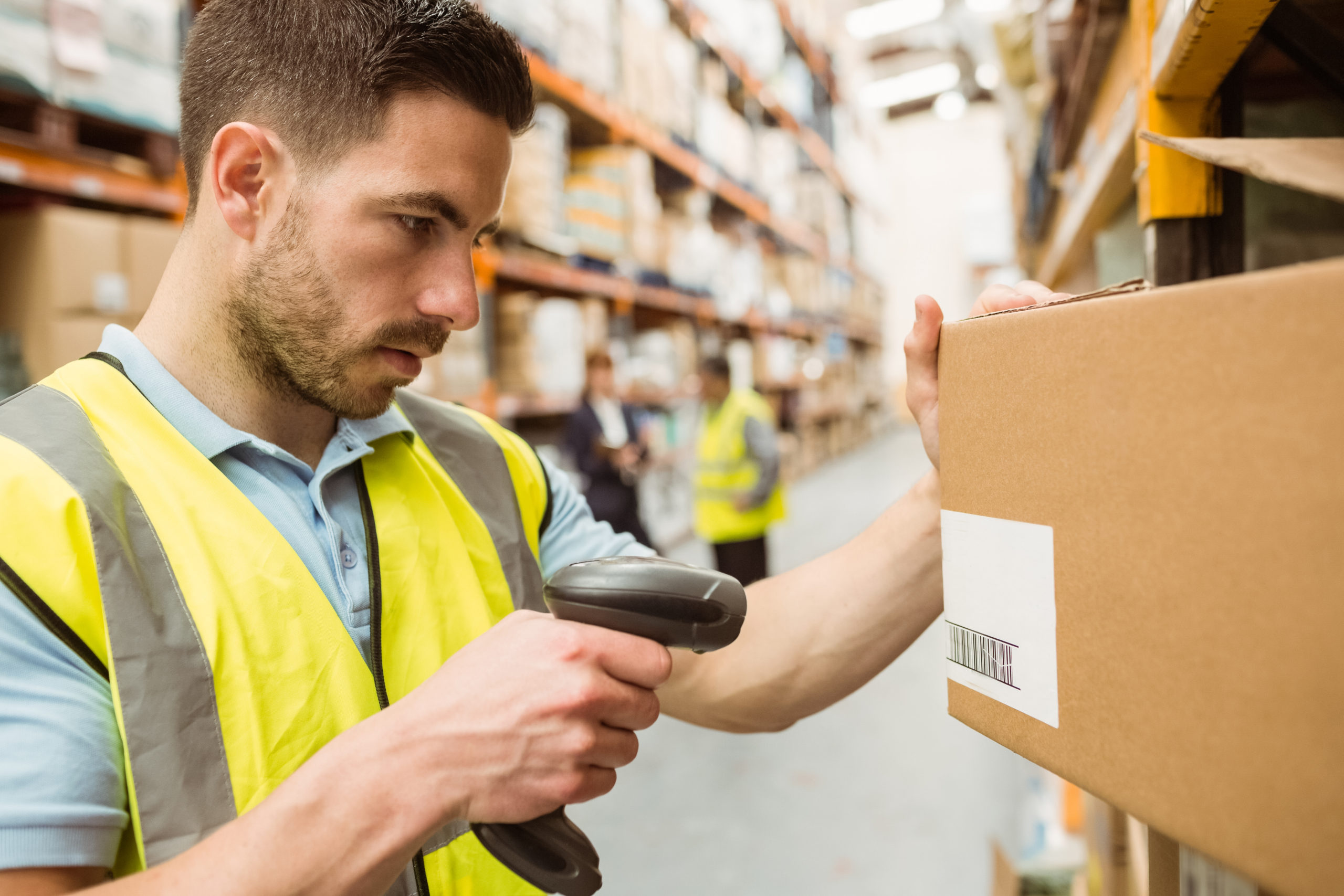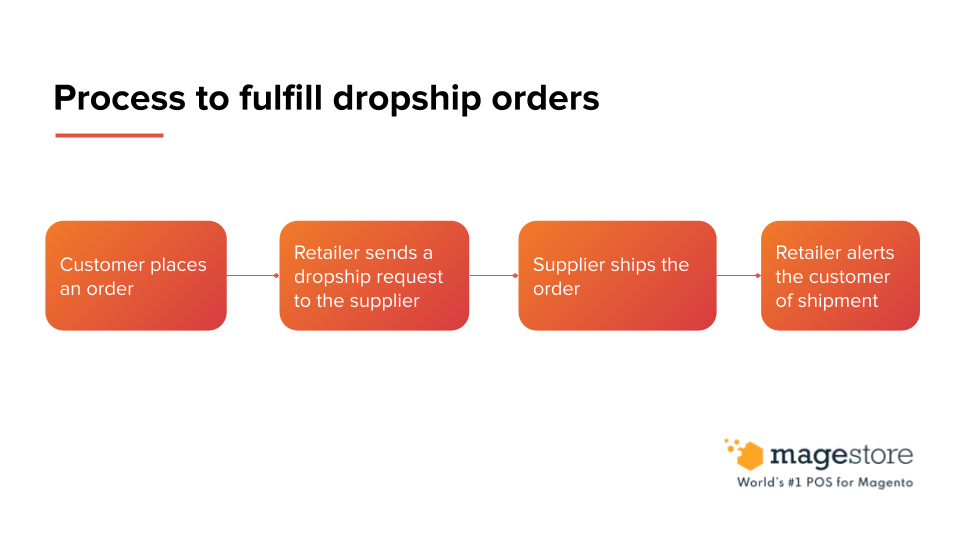Most big retailers with online and offline stores do not have a single method to fulfill all of their products. To always have a variety of items in-stock and get the best prices, they use a combination of internal warehouses, 3PLs, and dropshipping direct from a manufacturer or distributor.
In this article, we’ll focus on hybrid dropshipping where it combines with other fulfillment methods in retail to deliver the best experience for customers and also benefit retailers.
What do you know about hybrid dropshipping?
Hybrid dropshipping is a way of enabling retailers to both:
- sell products from their own local inventory
- place the orders directly with the manufacturer or a distributor. It happens when an SKU goes out of stock locally, or retailers don’t want to stock that item on purpose.
This approach enables you (as a retailer or distributor) to seemingly always have products in-stock, get the best prices, and have a variety of items in your catalog to fulfill the customer needs. We call this hybrid dropshipping, and it’s not just for the big retailers or wholesalers anymore. New software and services have made it accessible to everyone.

In detail, retailers using hybrid dropshipping will need to stock their own products in local stores or warehouses and fulfill orders as normal. This also includes products that are shipped via third-party logistics companies (3PL’s). Meanwhile, they also prepare a dropshipping operation or a system to fulfill dropship orders. The orders will be directly shipped from a manufacturer, distributor, or other third-parties after you request a dropship purchase from them.
Who’s involved in the hybrid dropshipping process?
Dropshipping methods are not new. Everyone seems to know about this way of fulfilling retail orders. To create your own hybrid dropshipping model, you simply need to understand the three most applicable stakeholders that make up the dropshipping supply chain: manufacturers or wholesalers, retailers and customers. Hybrid dropshipping will still involve these players in the process.

Manufacturers or wholesalers
Manufacturers produce the product and normally do not sell directly to the public. Instead of that, they often sell in bulk to wholesalers or retailers. Buying directly from the manufacturer that offers dropshipping is the cheapest way to purchase products for resale. However, most purchases require minimum order requirements you’ll need to meet. You as a retailer can buy a minimum quantity level and store the products at their warehouse. Every time you have an order, they might have a team to handle the distribution and fulfillment parts for dropship orders.
Wholesalers can also be your dropship supplier. They buy products in bulk from manufacturers, increase the price based on their own profit calculation and other factors, and then sell them to retailers for resale. Many wholesalers offer dropshipping to increase the chance of selling products to more retailers and end-users.
Retailers
A retailer sells products directly to the public, stocking their products from manufacturers or wholesalers. If you run a hybrid dropshipping business that fulfills your orders via dropshipping suppliers, you’re a retailer.
Customers
The customer is the one who places an order for a product on the retailer’s online store or marketplaces such as Ebay and Amazon. They have touchpoints with both retailers and suppliers (manufacturers or wholesalers or third-party shipping providers).

How do you implement hybrid dropshipping in your business?
1. Define the order process of your business
Now that you understand all the stakeholders involved, let’s take a look at how a dropship order gets processed. To illustrate, we’ll explore this process with our theoretical Magento store, Sports Outlet, an online-offline merchant that specializes in accessories for sports gear. They’re operating a normal retail selling and also dropships most of its products directly from a wholesaler called Wholesale Accessories. Alex will be the Sports Outlet’s customer in this business case.
The following is an example of how the entire dropshipping purchasing and fulfillment process might look with our theoretical store:

Step 1: Customer places an order with Sports Outlet
Alex needs to buy a runner T-shirt and places an order via Sports Outlet’s eCommerce store. Once the order is validated, Sports Outlet and Alex will get an email confirmation of the new order that is automatically generated by the Magento system.
The payment from Alex is captured during the checkout process and will be automatically transferred into Sports Outlet’s account.
Step 2: Sports Outlet sends a dropship request to their supplier
In this step, Sports Outlet goes to the Magento system and marks the order as dropship order if that is a dropship product or the product is out of stock. Then they proceed with the purchasing and fulfillment parts. Staff at Sports Outlet will prepare to fulfill by creating a dropship request and send the email order confirmation to a sales representative at Wholesale Accessories. Wholesale Accessories has Sports Outlet’s credit card on the file and will bill it for the wholesale price of the goods, including any shipping or processing fees.

Step 3: Wholesale Accessories ships the order
In this case, let’s assume that the item is in stock and the wholesaler is able to charge Sports Outlet’s card successfully. Then, the supplier Wholesale Accessories will pack the order and ship it directly to the customer. The shipping address information is from the dropship request sent earlier from Sports Outlet.
Although the shipment is from Wholesale Accessories, Sports Outlet’s name and address will appear on the return address label. Besides, their logo will display on the invoice and packing slip. Once the shipment has been confirmed, Wholesale Accessories will send an email to Sports Outlet with the invoice and a tracking number generated from a shipping agency.
The turnaround time on dropshipping orders is often very fast. Most quality suppliers can be able to deliver the package to the customer’s door in just a few hours. This makes the selling process of retailers run smoothly, like normal order fulfillment.
Step 4: Sports Outlet alerts the customer of shipment
After receiving the tracking number, Sports Outlet will add this number to the system and update it to the customer, likely using an email interface that’s built in from the online Magento system. After the order is shipped, Wholesale Accessories collects the payment and updates the order tracking status. The customer will be notified automatically since Sports Outlet has updated the tracking number in their system earlier as well. Now, the order and fulfillment process is complete. Sports Outlet’s profit (or loss) is the difference between what it paid Wholesale Accessories and what it charged Alex.

Find an omnichannel solution supporting hybrid dropshipping
To get started with this hybrid dropshipping model, you’ll need to get up to date inventory quantities from all of your vendors. This includes the updated inventory quantity from your own warehouse(s) and any 3PLs that you have products stored as well as external distributors and manufacturers. It means you need a system that allows you to manage suppliers.
You’ll also need an automated system that can pull in inventory quantities from multiple vendors for a single product, sum those inventory quantities and update the total inventory quantity to your shopping carts or other selling channels.

Furthermore, you would want the order fulfillment system to work smoothly with dropship orders from suppliers. When sending dropship orders to vendors, you’ll need your order fulfillment system to send orders to only the vendor who has the products in stock. It’s also recommended that your order fulfillment system is able to collect unit cost data from various vendors. Find a system that allows you to route orders to the vendor with the product in stock at the lowest unit cost. If there are multiple vendors for a single product, you can then assign orders to the lowest cost distributor.
There might be a lot more features that you need to create a successful hybrid solution. If you want to implement a hybrid dropshipping system suggested above for your business, check out a demo of Magestore omnichannel solution today.














